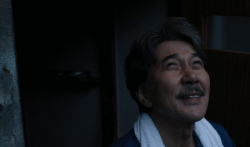If there’s one talent that photographer Annie Leibovitz is known for, it’s capturing the essence of celebrity. Her daring portraits of famed figures from John Lennon and Yoko Ono to a very pregnant Demi Moore are nothing short of iconic, imbued with a raw intimacy that lays these stars bare in more ways than one. The living legend has shot countless covers for such magazines as Rolling Stone and Vanity Fair, and has become a household name for her dramatic yet personal portraits.
Her latest body of work, however, features no red carpet regulars. Pilgrimage, an exhibition in the Smithsonian’s Museum of American Art on display through May 20, thrusts rather different, less human subjects into the center of Leibovitz’s lens. With this collection, the photographer presents the relics of her heroes, from Georgia O’Keefe’s adobe house to Emily Dickinson’s last surviving dress. Arranged in no particular order, the photographs come together to evoke each invisible icon at hand.
As its title suggests, the exhibit documents a rather personal journey for Leibovitz, through which she captures the sites particular to those she admires. Despite this sharp shift in focus, however, Leibovitz’s signature is all over the collection; the eclectic photos merely explore the nature of icons from a different angle, using objects and places rather than faces to bring famed historical personalities to light.
Accumulated over the course of two years, these photos are the result of extensive travel throughout America and Europe. With the reverence of a true pilgrim, Leibovitz pays homage to great names by capturing the vestiges of their legacies. In the case of Sigmund Freud, this meant photographing his famed reclining couch and his personal collection of books on the psyche. Virginia Woolf’s troubled complexity, on the other hand, is portrayed through a shot of her messy writing desk and a particularly haunting image of the river where she ended her life.
The icons of Pilgrimage are represented by an equally atmospheric collection of locations. Leibovitz demonstrates a particular interest in Graceland, Elvis Presley’s Memphis mansion, and the varied photographs of its lavish rooms—including one containing the television which the star once shot in a fit of anger—allude to the grandiosity of the King’s life. Ansel Adams’ Yosemite, Georgia O’Keefe’s Santa Fe, and Thoreau’s Walden Pond join the collection as places that carried significance for their associated icons. With a trained eye, Leibovitz thus captures the spirit of each place and evokes that of its absent occupant.
By far the most personal and striking piece of the collection is Leibovitz’s single shot of Niagara Falls. A souvenir of a trip she took with her daughters, the image renders the landmark in all its misty beauty. It is the lone star of the exhibit in the sense that it is unique to its photographer, not associated with an inspirational figure. In a way, it is Leibovitz’s admission of her own personal legacy. This is not so much a demonstration of possessiveness as an artist’s recognition that every place we frequent, and every object we habitually use, becomes a profound part of our identity. In the highest sense, the photo of Niagara Falls is the crown jewel of a collection that seeks to explore the personal meaning of the places and possessions one leaves behind.




